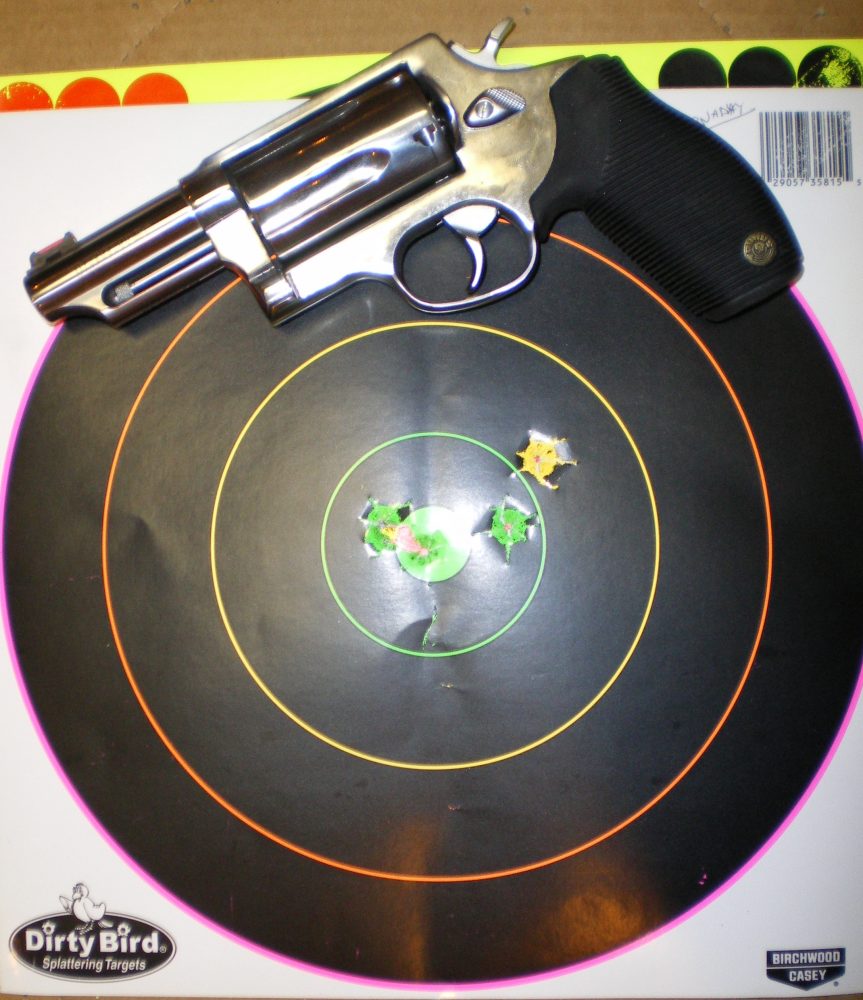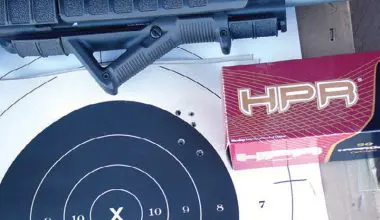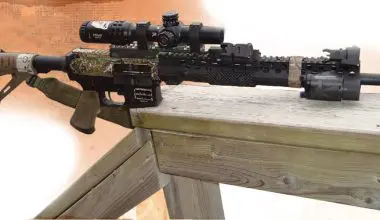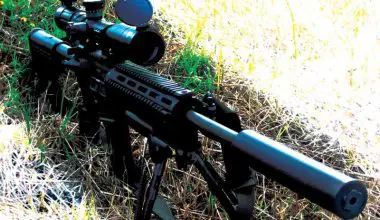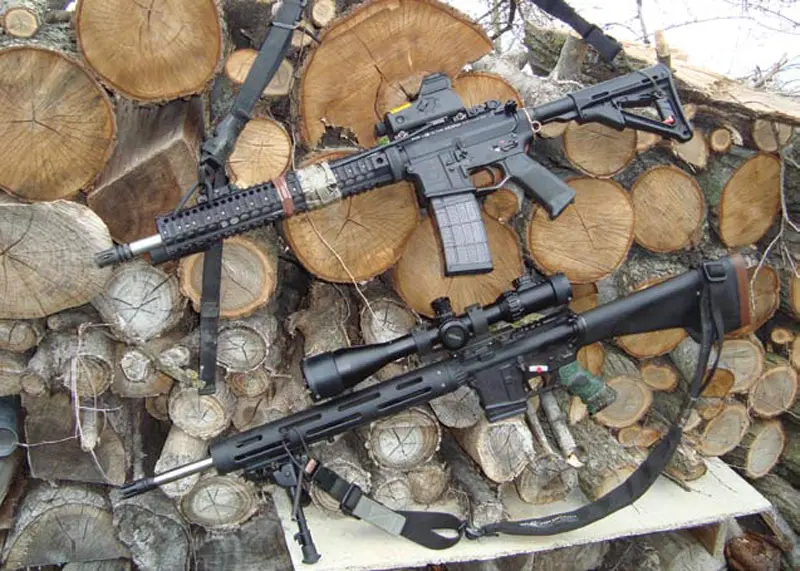
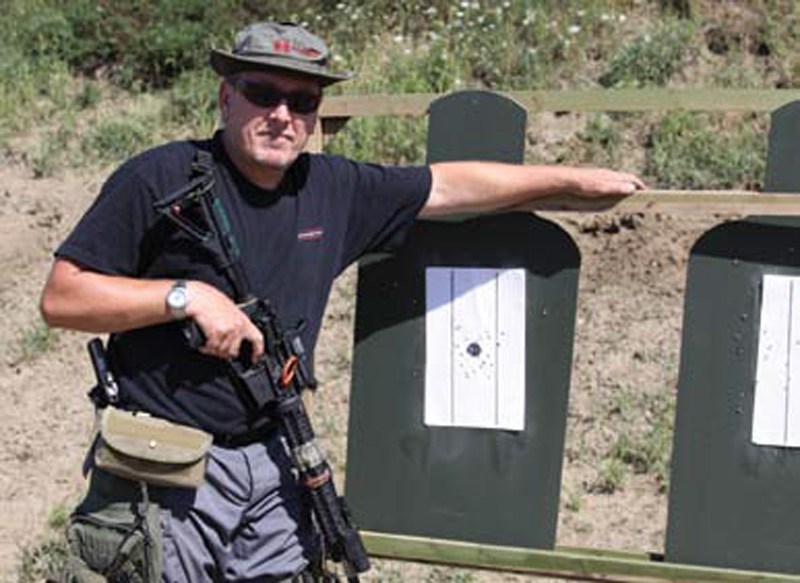
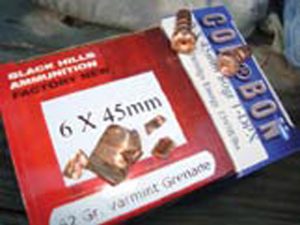
There are many things the 5.56mm does exceedingly well. In targetgrade AR-15 rifles with no-holdsbarred handloads or top-notch factory ammo, ½-inch groups at 100 yards are no big surprise, and certainly not the limit.
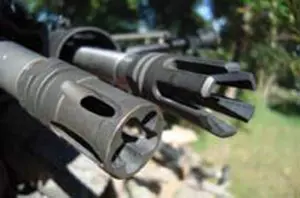
Average ammo in half-decent rifles will get most of the jobs done most of the time. Even truly poor ammo in a well-used AR-15 might still be sufficiently accurate for some scenarios, probably out-grouping some new AKs and even some commercial hunting rifles.
Table of Contents
THE TWO-AMMO SOLUTION
The 5.56’s limited penetration makes it appealing to the good guys who have to consider the consequences of a miss or shoot-through. But it is also a liability: the 5.56 generally does not shine at getting through things to the bad guys hiding behind them. As I have said before, no caliber, rifle or bullet can both limit overpenetration and guarantee adequate penetration. The solution, in my opinion: any rifle/caliber considered for police use should have two kinds of ammo immediately available to the user.
Finally, there is still great comparative economy in 5.56 simply because of its incumbency, which also brings us availability and variety.
Could there be enough advantage in replacing bullets of .224 diameter with .243 diameter to make it worthwhile in the patrol rifle context? That is the essence of the 6x45mm cartridge: a .223/5.56mm case with the neck expanded to take a bullet that is a scant .019 larger in diameter.
The only difference in a 6×45 rifle, then, is the barrel. Magazines, bolts, springs, everything else is unchanged— and this is far from being a new idea. Olympic Arms was offering AR-15s in 6×45 during my personal AR-15 infancy in the late 1970s and early ‘80s. The idea actually predates the .223 Remington cartridge, going back to when handloaders necked the older .222 Remington up to a 6mm wildcat.
There has lately been a resurgent interest in the caliber, with commercial ammo being made available by CorBon and Black Hills. While a diameter increase of .019” doesn’t sound like much—and it isn’t—the increase does allow the use of significantly heavier bullets. This measly 8% diameter change enables the use of bullets twice the weight of some .223/5.56 loads, up to 100 grains.
TEST BED UPPERS
I put together two uppers in 6×45. The first was in patrol rifle format, coupled with a lower having a carbine stock and standard fire-control group. The other was more of a target/designated marksman rifle (DMR) mated to the lower I use for NRA High Power competition, which has a long, solid stock and match trigger.
The idea here was to test the cartridge in the smaller package for handling, recoil, and reliability, and then use the larger package to gauge accuracy potential. As I often find, with a quality free-floated barrel and a good optic, short or long doesn’t affect much, accuracy-wise.
Here are the specs for each:
DMR upper: Krieger 20-inch, 1:9 twist stainless barrel; upper receiver and bolt carrier group from M&A Parts; JP freefloat forend; Addax Tactical flash hider, Millett TRS-1 4-16X50 scope in a LaRue SPR-E mount. Krieger barrels enjoy near-legendary status among those obsessive seekers of the one-hole group.
Carbine upper: Green Mountain 1:9 twist stainless barrel with Vltor flash hider and modular upper receiver; LaRue forend; Fraser-Volpe MARS reddot sight; Midwest Industries backup sights. This barrel was actually branded Vltor, but their foray into the 6×45 seems to have ended.
IMPRESSIONS OF THE ABOVE PARTS
The Addax flash hider has six, not three or four, open prongs. It works very well, with a near-total squelch of the flash (on the 20-inch barrel). The Vltor allowed a small dull red flash. To make sure it was not due to the carbine’s shorter barrel, I swapped the Vltor for a Vortex flash hider, and as expected, the Vortex killed the flash to a few occasional sparks. The Vltor is, however, much shorter and lighter than a Vortex.
The LaRue forend used for the carbine is a staple now; it’s good and everyone knows it. The longer gun’s JP forend looks plain and simple, which it is, but that is not to say it isn’t well engineered and executed, because it is. The slender profile and textured-paint surface were pleasant to use and effective.
The carbine’s Fraser-Volpe sight is well made and priced accordingly at just over a grand. Dot intensity is super-quick to adjust and includes a night-vision-compatible setting. The sight has an integral laser that, when activated by the hard-wired pressure switch, turns off the red-dot reticule to avoid confusion. I found battery life to be much better than the stated 200 hours, getting several months at least on the highest setting. The only downside to the sight other than price is that it is about an inch higher than the iron sights, making any co-witness with iron sights impossible and adding to offset considerations.
I’m not an optics connoisseur, but I find the Millett line impressive, especially given the low price. The glass is good and the features many. The TRS-1 scope I used on the DMR top end had a 4-16X magnification range, illuminated (green) Mil-Dot reticle, side focus, and easy to use locks on the adjustment turrets. The TRS-1, at just over $300, seems a great value. I am less likely than most to buy something made in China, but between the price and the fact that their celebrity front man is sniping legend Major John Plaster, the Milletts may need to be on your radar.
QUALITY CONTROL
Of the qualities I wanted to examine in the 6×45—reliability, accuracy, recoil, noise level, flash, and downrange effect with different loads—all could be examined from sandbags on the bench. Some of them, especially accuracy potential, could not be evaluated effectively in a training or competition environment. Therefore much of the test firing was methodically done off sandbags, although I did also use the carbine in a tactical match and during several classes.
Throughout more than 1,500 rounds and using a variety of magazines, both guns functioned without any problem. Sensationwise, “You wouldn’t know the difference.” Recoil, noise, and flash are the same for 6×45 and 5.56.
Accuracy-wise, the 6×45 has quite a legacy. Early on, it was used in benchrest competition and in 1973 a record group was fired of 200 yards, five shots into under 5/16-inch. That would have been one ragged hole, and a small one, even at 100 yards.
But the meat and potatoes of the title’s question is less about accuracy and more about terminal ballistics, so let me skip ahead to that. First it must be said that “better” is totally subject to the individual’s wants, needs, and opinions. With that disclaimer out of the way, I can sum it up.
The ballistic advantage of 6×45 over 5.56 in the patrol rifle context is there, it is measurable, but it is only incrementally better. If the 5.56’s limited penetration with certain ammo types is an attribute, and it is, then the 6×45 must equal it or somehow do it better. That would mean not more or less penetration, but more tissue disruption within the same depth of penetration. Mission accomplished—to a degree.
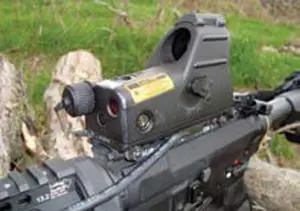
It would also mean that with penetration- specific loads, the 6×45 would have to penetrate intermediate barriers better, delivering the goods through auto glass, metal, drywall, and other cover better than 5.56. Mission accomplished, but again, to a degree.
DEPARTMENT OF FIRE, SMOKE, NOISE AND GROUPING
I fired six different factory loads through two rifles. From CorBon: 80-grain allcopper poly-tipped Barnes T-TSXs, 70-grain poly-tipped Sierra Blitz Kings, and 62-grain Barnes Varmint Grenade. Also three Black Hills loads: 100-grain Sierra Spitzer, 85-grain Sierra Game King, and the same 62-grain Barnes Varmint Grenade loaded by CorBon.
Both guns showed a strong preference for the Varmint Grenade. These preferences are a little vexing—one always hopes for fantastic groups with everything—but pretty much to be expected.
Both the 20-inch Krieger barrel and 16-inch Green Mountain rarely went over one inch with this load, with some groups down to 5/8 inch for both barrels (using a Millett 4X16 scope on both for grouping purposes).
Neither much liked the 70-grain Blitz King load for some reason, with these going two inches and sometimes out to beyond three inches. The 85-grain Sierra Game Kings and 100-grain Sierra Spitzer loads also struggled to stay under two inches.
As I was most interested in the two patrol-rifle-relevant extremes of low and high penetration, I was pleased to find that the CorBon load using the Barnes 80-grain T-TSX bullet gave groups ranging from just under one inch to 1½ inches from both guns. This is a very versatile bullet, expanding perfectly with deep penetration in bare ballistic gel shots and giving new levels of performance against intermediate barriers.
Barnes has been a leader in new bullet- design ideas. The Varmint Grenade has a brittle core made of pressed tin and copper dropped into a traditional bullet jacket. Upon impact, the core is shattered back into powder form, giving an immediate explosive effect and low penetration. For its intended purposes of varminting and limited penetration for police use, and in terms of accuracy, it is great. However, in a recent survey of eight woodchucks who had taken to eating various parts of my vehicle, the consensus was not so positive.
The CorBon load featuring the polymer- tipped 70-grain Sierra Blitz King also performed well on “wet” targets and, to my surprise, broke up faster in wallboard than the Barnes VG.
ACCIDENTAL SWITCHEROO CONSEQUENCES
With cartridges so similar and the likelihood of some 5.56 being on the range while 6×45 is being used, what about ammo mixups? Chambering a 5.56 in a 6×45 and vice-versa shakes out like this: 6x45s won’t chamber in a 5.56. I tried it several times. The bolt does not go into battery, and the bigger round can usually be extracted without drama, although I did have to do a mortar-clear on one, bumping the buttstock on the ground while pulling on the charging handle.
I did fire several rounds of Wolf .223 and Federal XM193 5.56 through the 6×45 carbine without catastrophe. And to my surprise, they cycled the action, albeit rather weakly. Accuracy was of course not good, with the bullets keyholing.
SUMMARY
The chicken-and-egg dynamic is very much in play with the 6×45. With ammo available from at least two manufacturers (and the 6×45 being a very easy reloading proposition, as it uses .223/5.56 brass), fodder can be had.
As this is written, it appears that uppers and complete guns are only being offered by Les Baer Custom (as well as LBC-branded ammo made by Black Hills Ammo). But many barrel makers will chamber a barrel in 6×45 for you. This may be the 6×45’s niche for now: the AR-15 aficionado, handloader, and do-ityourself builder-experimenter.
For most, any incremental advantage over the 5.56 for patrol will be trumped by other factors.
